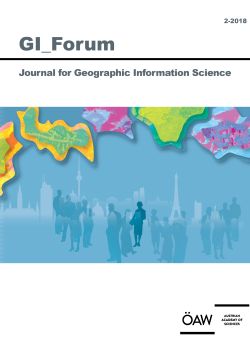Adrijana Car – Thomas Jekel – Josef Strobl – Gerald Griesebner (Eds.)
GI_Forum 2018, Volume 6, Issue 2
Journal for Geographic Information Science
Daniella Vos,
Stijn Heeren,
Niek van Ruler,
Kiki Smallenbroek,
Ronnie Lassche
S. 13 - 20
doi:
10.1553/giscience2018_02_s13
Verlag der Österreichischen Akademie der Wissenschaften
doi:
10.1553/giscience2018_02_s13
Abstract:
Artefacts found during archaeological fieldwork are the objects most favoured by academic research. Private collections on the other hand, of which many exist and which may contain large numbers of artefacts, are mostly disregarded. These overlooked objects are often retrieved by people looking for artefacts in agrarian fields or in construction yards. Their private collections carry considerable value for archaeological and heritage research, but have never been systematically documented. They are therefore hardly known within professional circles in the Netherlands. The central aim of PAN (Portable Antiquities of the Netherlands) is to document and publish archaeological finds in private ownership online, particularly metal artefacts found by metal detector users. PAN makes information about these objects and their find locations available for a variety of stakeholders, significantly increasing the amount of archaeological artefacts that can be used for research and for the creation of object distribution maps in the Netherlands, which are an important research tool for archaeologists.
archaeology, geospatial technology, the Netherlands, Digital Humanities
Published Online:
2018/12/10 07:27:02
Object Identifier:
0xc1aa5576 0x003a1fc5
Rights:https://creativecommons.org/licenses/by-nd/4.0/
GI_Forum publishes high quality original research across the transdisciplinary field of Geographic Information Science (GIScience). The journal provides a platform for dialogue among GI-Scientists and educators, technologists and critical thinkers in an ongoing effort to advance the field and ultimately contribute to the creation of an informed GISociety. Submissions concentrate on innovation in education, science, methodology and technologies in the spatial domain and their role towards a more just, ethical and sustainable science and society. GI_Forum implements the policy of open access publication after a double-blind peer review process through a highly international team of seasoned scientists for quality assurance. Special emphasis is put on actively supporting young scientists through formative reviews of their submissions. Only English language contributions are published.
Starting 2016, GI_Forum publishes two issues a Year.
Joumal Information is available at: GI-Forum
GI_Forum is listed on the Directory of Open Access Journals (DOAJ)




 Home
Home Print
Print
 References
References
 Share
Share
